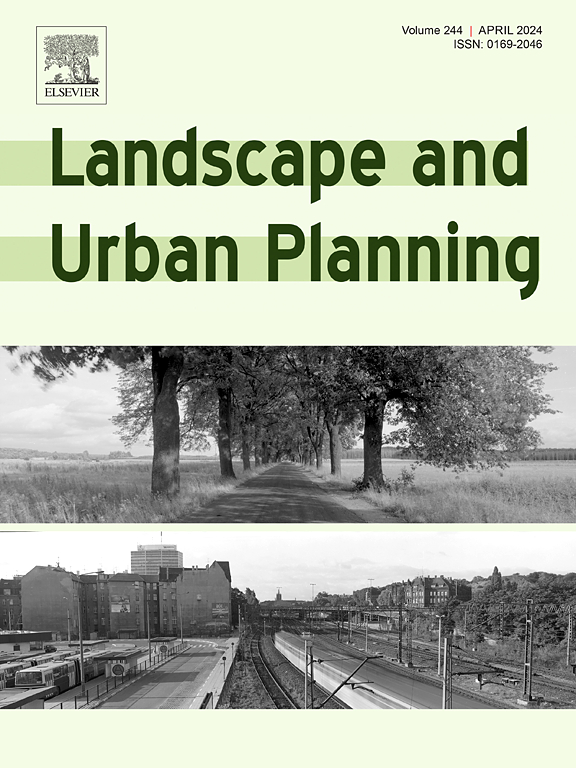加强城市可持续性:支持绿色基础设施规划的基于能源的框架
IF 9.2
1区 环境科学与生态学
Q1 ECOLOGY
引用次数: 0
摘要
绿色基础设施(GI)是适应气候变化和城市可持续发展的重要战略,但整合其多功能性仍然具有重大挑战性。本研究结合能值分析、多目标优化和区域气候模型,构建了以可持续发展为导向的地理标志系统优化框架。它强调了一个健全的跨领域评估,并解决了现实世界的挑战,如有限的数据可用性和紧迫的时间表。该框架应用于不同国家的两个案例,揭示了地理标志项目的可持续性因场地特定因素和国家背景而异。常见的研究结果强调了绿色屋顶的高度优先性,它与雨水花园或下沉绿色相结合,是环保的,具有成本效益的,多功能的。透水路面,尽管以前的经济优势,显示出较低的可持续性。敏感性分析揭示了绿色屋顶相关参数和能钱比的重要性。这项研究为利益相关者提供了强有力的决策支持,并推进了地理标志规划,为气候变化下的可持续城市实践提供了新的见解。本文章由计算机程序翻译,如有差异,请以英文原文为准。

Enhancing urban sustainability: An emergy-based framework to support green infrastructure planning
Green infrastructure (GI) is a vital strategy for climate change adaptation and urban sustainability, yet integrating its multifunctionality remains significantly challenging. This study develops a sustainability-oriented optimization framework for GI systems, incorporating emergy analysis, multi-objective optimization, and regional climate models. It highlights a sound cross-domain assessment and addresses real-world challenges such as limited data availability and tight timelines. This framework is applied to two cases across different countries and reveals that GI project sustainability varies by site-specific factors and national contexts. Common findings underscore the high priority of green roofs, which, combined with rain gardens or sunken greens, are eco-friendly, cost-effective, and multifunctional. Permeable pavements, despite previous economic advantages, show lower sustainability. Sensitivity analysis reveals the importance of parameters related to green roofs and the emergy money ratio. This research provides robust decision support for stakeholders and advances GI planning, offering novel insights into sustainable urban practices under climate change.
求助全文
通过发布文献求助,成功后即可免费获取论文全文。
去求助
来源期刊

Landscape and Urban Planning
环境科学-生态学
CiteScore
15.20
自引率
6.60%
发文量
232
审稿时长
6 months
期刊介绍:
Landscape and Urban Planning is an international journal that aims to enhance our understanding of landscapes and promote sustainable solutions for landscape change. The journal focuses on landscapes as complex social-ecological systems that encompass various spatial and temporal dimensions. These landscapes possess aesthetic, natural, and cultural qualities that are valued by individuals in different ways, leading to actions that alter the landscape. With increasing urbanization and the need for ecological and cultural sensitivity at various scales, a multidisciplinary approach is necessary to comprehend and align social and ecological values for landscape sustainability. The journal believes that combining landscape science with planning and design can yield positive outcomes for both people and nature.
 求助内容:
求助内容: 应助结果提醒方式:
应助结果提醒方式:


